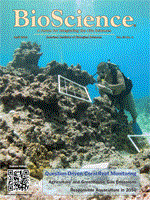In response to our paper (Stephens et al. 2012), Hanson and colleagues state, “There is an urgent need for scientists to report on the myriad ecosystem benefits of wildfires, including high-severity fires.” Although we agree, the synthesis of information related to high-severity wildfire was not our objective. Despite this, we do recognize and highlight the ecological benefits of high-severity wildfire, at appropriate spatial and temporal scales.
In particular, Hanson and colleagues question our conclusions that thinning mimics prescribed fire for wildlife and claim that we do not stress the ecological importance of high-severity fire. For their first point, they cite two papers (Meyer et al. 2005, Robertson and Hutto 2007). Although these are interesting papers, they are not germane to the meta-analysis (Fontaine and Kennedy 2012) that was used to support our findings, which included all papers published through 2008 in which one of our a priori selection criteria was that a paper had to include a demographic response to treated and untreated stands. Therefore, habitat papers such as Meyer and colleagues (2005) were not included, because they did not present demographic data. We made this decision because interpreting the fitness consequences of habitat modifications is difficult because wildlife can demonstrate flexibility to resource changes, and required resources are rarely identified in the literature.
Another a priori literature selection criteria in Fontaine and Kennedy (2012) was to include only papers in which thinning was specifically used as a tool to reduce fire hazards, which are “generally a lower-intensity treatment… than those implemented for other silvicultural objectives.” Therefore, papers like Robertson and Hutto (2007) were not included because they compared avian (olive-sided flycatcher) densities in “selectively harvested” forests with forests burned by wildfires.
Hanson and colleagues' claim that we did not stress the ecological importance of high-severity fire to wildlife suggests that they did not carefully read our paper. We clearly state at the end of the “Wildlife” section that our “analyses demonstrate that low-to moderate-severity surface fire (and presumably its thinning surrogate) does not mimic the early successional habitat conditions created by high-intensity, patchy, stand-replacing fires.” Furthermore, in the “Conclusions” section, we recommend the “expanded use of managed wildfire.”





